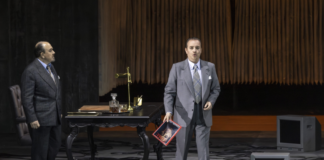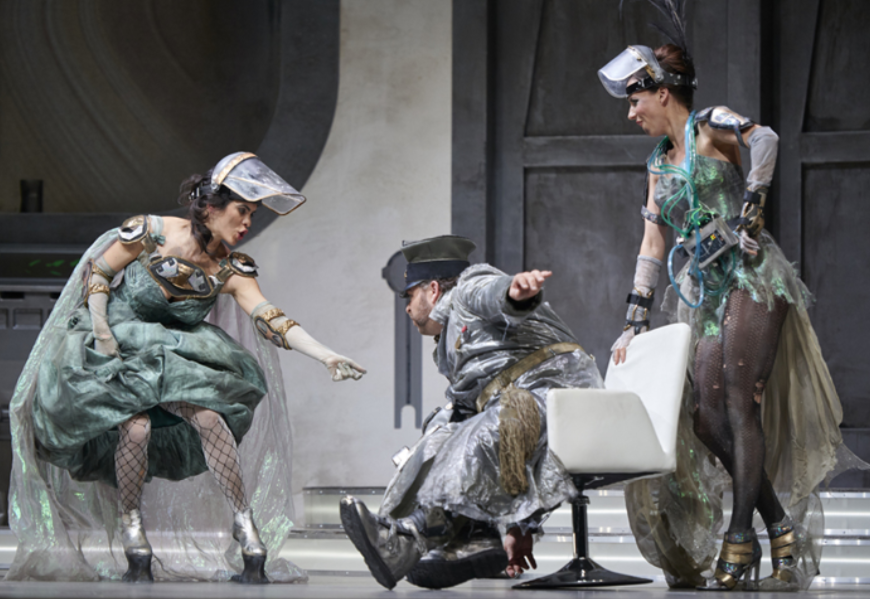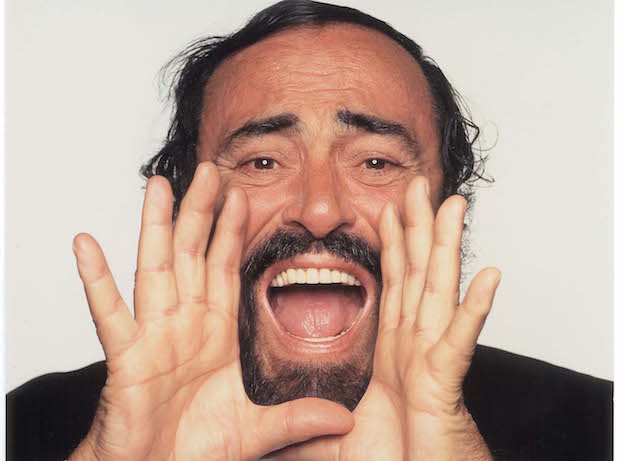
The last time the Lohengrin swans drew their knight on the stage of La Monnaie goes back more than 25 years. In recent years, their arrival have been announced more than once, but now is the perfect occasion to finally revive one of the most popular Richard Wagner operas. With Alain Altinoglu conducting and Olivier Py staging, this new production should put stars in the eyes of the spectators!
In 1841, Richard Wagner (1813-1883) perused a book by Christian Theodor Lucas on German legends. The work inspired him and served as a basis for all his later operas. The Lohengrin project – a name derived from the old French “li loheren Garin” (Garin le Lorrain) – matured in the following years during his stay in Dresden, in parallel with his work on Meistersinger and the creation of Tannhäuser. Enriched by several other sources, Wagner completed his libretto in verse in 1845 and the score three years later. Political events threw him on the roads of exile before seeing the first performance of this new opera, but Liszt conducted it in Weimar in 1850. The incomprehension which his music raises in the beginning – “just noise, an infernal din” writes a critic of the time – will disappear in the months that follow before experiencing a delirious enthusiasm in Germany and then in the rest of Europe – the work was performed as early as 1870 in Brussels – and becoming a summit of romantic opera.
The narrative combines history and myth, tale and tragedy: accused of the murder of her brother Gottfried by Friedrich von Telramund, Princess Elsa of Brabant is saved by the arrival of a mysterious knight. The latter spares the accuser and marries Elsa despite the silence he imposes on his identity. In the hope of revenge, Telramund and his wife Ortrud sow doubt in the mind of the princess who poses the forbidden question. The mysterious knight, whom one discovers is the son of Parsifal and inspired by the Holy Grail, withdraws forever, but not without having released the brother from Ortrud’s spell.
The score is the affirmation of an already very personal symphonic colour and carried by a powerful, vigorous musical writing. From the opening – or rather a symphonic prelude – the stretched and bewitching sound, described by Nietzsche as “blue like the opium” introduces us into Lohengrin’s magical universe before making us foresee the end. By merging images and sounds, Wagner reinforces his grip on our spirits that are literally carried away by the musical and dramatic flow. There is no need to be a confirmed Wagnerian to appreciate the powerful magic of this work.
No other opera work has shed so much ink as Richard Wagner’s. And the influence of his personality and his art on the socio-political and aesthetic thinking of the opera spectator, as well as on German cultural history as a whole, is still being debated. Friedrich Nietzsche, Charles Baudelaire, George Bernard Shaw, Thomas Mann, Theodor W. Adorno, Alain Badiou, among many other writers, musicologists, philosophers and music critics, questioned this issue and theorized for or against Wagner. The director Olivier Py is today part of this rich debate, not with a pen but with a new staging of Lohengrin. For Py, Lohengrin is a work in which the big Wagner-nazism debate cannot be avoided, like he felt he could in his stagings of Tristan und Isolde, Tannhäuser and Der fliegende Holländer. On the set of a theatre in ruins, using the images and the great icons of Germanic culture, he turns to the history of a nation and questions the place and responsibility of artists in contemporary society.
The musical direction of the La Monnaie Symphony Orchestra and Choir will be entrusted into the expert hands of its musical director Alain Altinoglu, who was the first French conductor since Pierre Boulez to be invited to the Mecca of Wagnerism, Bayreuth. He will meet Olivier Py for the second time this season, since they also formed the tandem of our production of Francis Poulenc’s Dialogues des Carmelites, presented in December. The previous productions of Py at La Monnaie, Les Huguenots (Meyerbeer) in 2011 and Hamlet (Thomas) in 2013, have remained in the memory of the public and critics alike as great moments of theatre. The Frenchman has at his sides the team that has already accompanied him on these two previous projects, notably Pierre-André Weitz for sets and costumes, and Bertrand Killy for lighting. La Monnaie Choir will be prepared by their chorus master Martino Faggiani.
The Hungarian bass Gábor Bretz debuts at La Monnaie and in the role of the king Heinrich der Vogler, a role that should fit him like a glove. Two great tenors will make their debuts in the role of the knight Lohengrin, the American Eric Cutler and the Canadian Joseph Kaiser*. Eric Cutler sang Apollo in our last production of Daphne (Strauss) in September 2014. He started with the role of Raoul de Nangis (Les Huguenots, Meyerbeer) in 2011 before incarnating Pastrez (Król Roger, Szymanowski). Joseph Kaiser debuted in 2014 at La Monnaie in the concert version of Fidelio.
The sopranos Ingela Brimberg and Megan Miller* incarnate Elsa. Ingela Brimberg has known Olivier Py since taking the role of Valentine in Les Huguenots. Internationally, she stunned everybody over her interpretation of Senta in Der Fliegende Holländer. One can only rejoice to hear her in this new role because it seems that Wagner and this Swedish soprano should form an harmonious couple. The American Megan Miller is in great demand for her performances of Wagner’s roles, like the recent Sieglinde (Die Walkure) at Leipzig and Washington and Senta (Der Fliegende Hollander) in Zurich. This will be her debut at La Monnaie.
The baritone-basses Andrew Foster-Williams and Thomas Jesatko* interpret Friedrich von Telramund. The La Monnaie audience are familiar with Andrew Foster-Williams, because it was here that he sung Don Pizarro (Fidelio, Beethoven). A member of the Mannheim Opera, Thomas Jesatko makes his debut at La Monnaie.
The character of Ortrud will be incarnated by the Russian mezzo-soprano Elena Pankratova and the German mezzo-soprano Sabine Hogrefe. Elena Pankratova confirmed her international stature by singing Färberin (Die Frau ohne Schatten, Strauss). She performed Kundry in the last Parsifal presented in Bayreuth. Sabine Hogrefe interpreted the role of Ortrud for the first time at the Frankfurt Opera with such success that the role has resulted in her being solicited by several European operas in the coming seasons. She is making her debut at La Monnaie.
Since Salome (Strauss) in 1992, Werner Van Mechelen has regularly returned to La Monnaie. He returns to incarnate the personage of Heerrufer. Zeno Popescu, Willem Van der Heyden and Bertrand
Duby will sing The Nobles, Raphaële Green (MM Laureate), Isabelle Jacques (MM Soloist), Virginie Léonard (MM Soloist), Lisa Willems (La Monnaie Chorus Academy) the Edelknaben.















